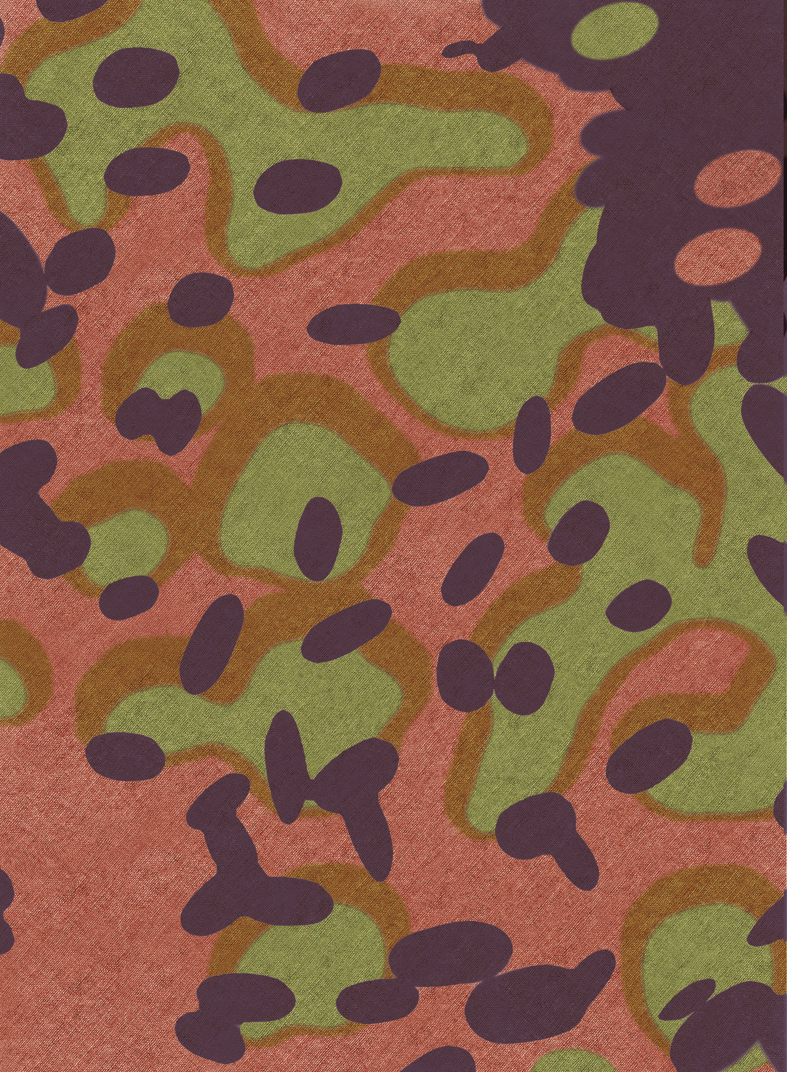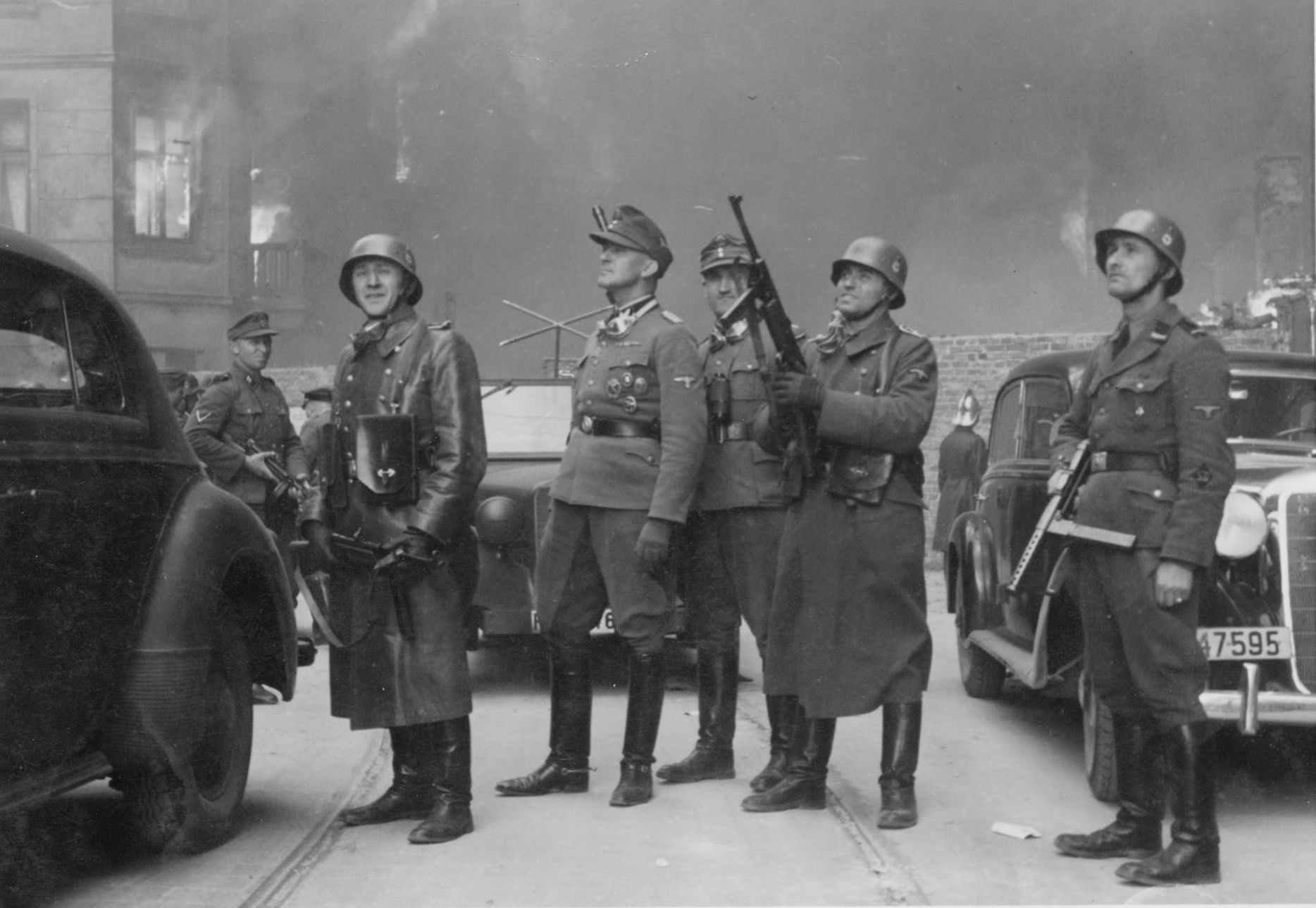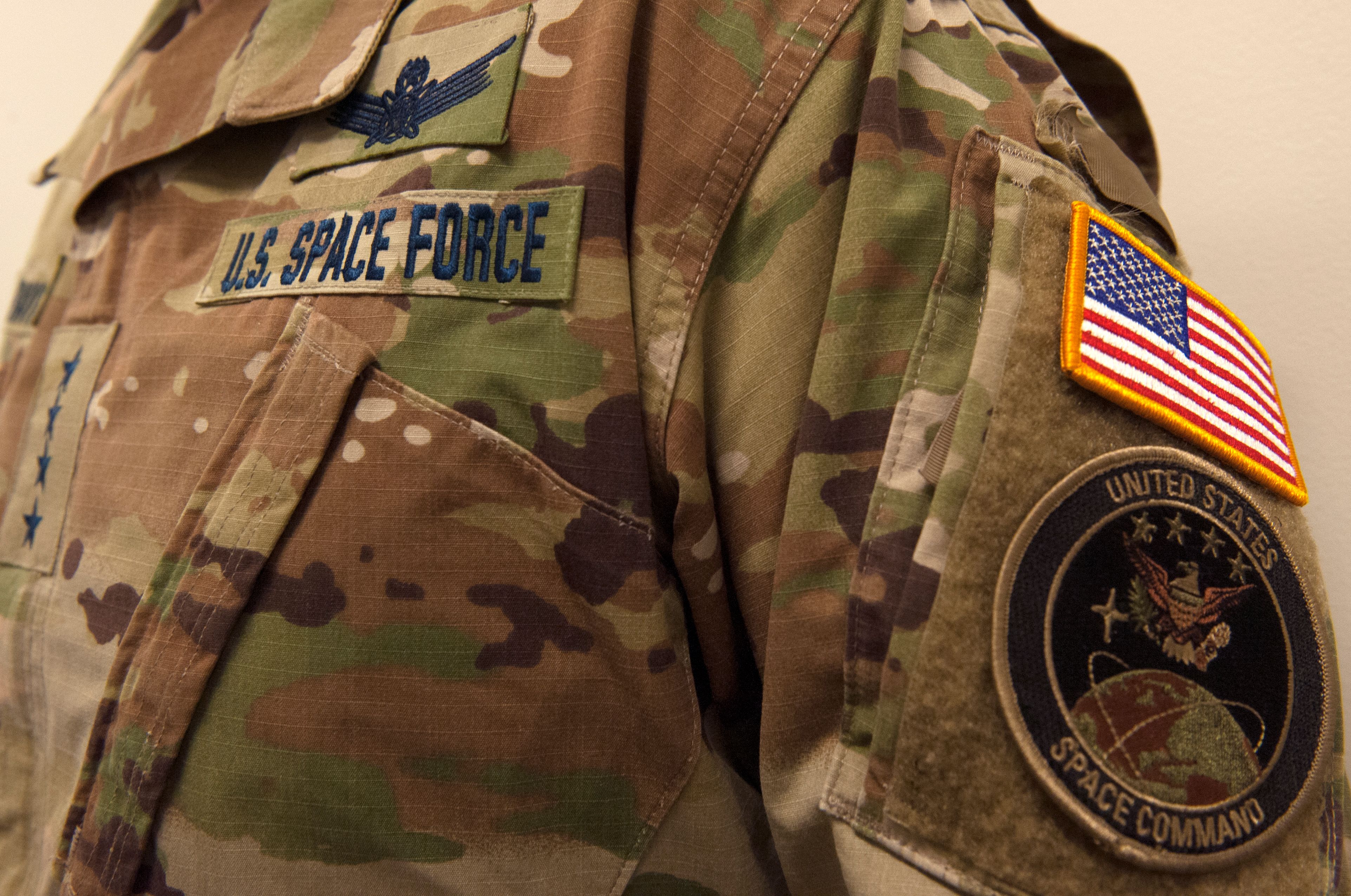|
Multi-scale Camouflage
Multi-scale camouflage is a type of military camouflage combining patterns at two or more scales, often (though not necessarily) with a digital camouflage pattern created with computer assistance. The function is to provide camouflage over a range of distances, or equivalently over a scale invariance, range of scales (scale-invariant camouflage), in the manner of fractals, so some approaches are called fractal camouflage. Not all multiscale patterns are composed of Pixelation, rectangular pixels, even if they were designed using a computer. Further, not all pixellated patterns work at different scales, so being pixellated or digital does not of itself guarantee improved performance. The first standardized pattern to be issued was the single-scale Italian ''telo mimetico''. The root of the modern multi-scale camouflage patterns can be traced back to 1930s experiments in Europe for the Wehrmacht, German and Red Army, Soviet armies. This was followed by the Canadian development of ... [...More Info...] [...Related Items...] OR: [Wikipedia] [Google] [Baidu] |
CADPAT Digital Camouflage Pattern (Temperate Woodland Variant)
The Canadian Disruptive Pattern (CADPAT; ) is the computer-generated digital camouflage pattern developed for use by the Canadian Armed Forces. Four operational variations of CADPAT have been used by the Canadian Armed Forces: a temperate woodland pattern, an arid regions pattern, a winter operations pattern, and a multi-terrain pattern. CADPAT was the first digital camouflage pattern to be used operationally, having been issued in 1997 with the Canadian Armed Forces. The pattern became fully standardized within the Canadian Armed Forces by 2002, having completely replaced the olive-drab operational uniforms formerly used by Regular Force units. Development of the multi-terrain CADPAT variant began in 2019 and is being issued to replace temperate woodland and arid CADPAT variants. History Canada's desire for a new soldier system dated back to November 1988 and closely followed efforts in many NATO countries. The first research effort, called Integrated Protective Clothing and E ... [...More Info...] [...Related Items...] OR: [Wikipedia] [Google] [Baidu] |
Disruptive Coloration
Disruptive coloration (also known as disruptive camouflage or disruptive patterning) is a form of camouflage that works by breaking up the outlines of an animal, soldier or military hardware with a strongly contrasting pattern. It is often combined with other methods of crypsis including background colour matching and countershading; special cases are coincident disruptive coloration and the disruptive eye mask seen in some fishes, amphibians, and reptiles. It appears paradoxical as a way of not being seen, since disruption of outlines depends on high contrast, so the patches of colour are themselves conspicuous. The importance of high-contrast patterns for successful disruption was predicted in general terms by the artist Abbott Thayer in 1909 and explicitly by the zoologist Hugh Cott in 1940. Later experimental research has started to confirm these predictions. Disruptive patterns work best when all their components match the background. While background matching works b ... [...More Info...] [...Related Items...] OR: [Wikipedia] [Google] [Baidu] |
Waffen-SS
The (; ) was the military branch, combat branch of the Nazi Party's paramilitary ''Schutzstaffel'' (SS) organisation. Its formations included men from Nazi Germany, along with Waffen-SS foreign volunteers and conscripts, volunteers and conscripts from both German-occupied Europe and unoccupied lands. With the start of World War II, tactical control was exercised by the (OKW, "High Command of the Armed Forces"), with some units being subordinated to the (Command Staff ''Reichsführer-SS'') directly under Himmler's control. It was disbanded in May 1945. The grew from three regiments to over 38 division (military), divisions during World War II. Combining combat and police functions, it served alongside the German Army (1935–1945), German Army (''Heer''), ''Ordnungspolizei'' (Order Police), and other security units. Originally, it was under the control of the (SS operational command office) beneath Heinrich Himmler, the head of the SS. Initially, in keeping with the raci ... [...More Info...] [...Related Items...] OR: [Wikipedia] [Google] [Baidu] |
Erbsenmuster
The Erbsenmuster or pea pattern was one of a family of German World War II camouflage patterns, said to have been designed by Johann Georg Otto Schick, and first issued to the Waffen-SS in 1944. The pattern had five colours, pale brown, dark brown, green, olive green and black, arranged as small rounded areas dotted over large irregular areas. Development It was developed from Eichenlaubmuster, the oak leaf pattern. Its style was quite unlike earlier German camouflage smocks: unlike them, it was not reversible. It was a two piece uniform A uniform is a variety of costume worn by members of an organization while usually participating in that organization's activity. Modern uniforms are most often worn by armed forces and paramilitary organizations such as police, emergency serv ... and could be worn either by itself in warm weather, or over other uniform; the camouflage pattern was intended to be effective all year round. References {{DEFAULTSORT:Pea-Dot Camouflage ... [...More Info...] [...Related Items...] OR: [Wikipedia] [Google] [Baidu] |
Platanenmuster
German World War II camouflage patterns formed a family of disruptively patterned military camouflage designs for clothing, used and in the main designed during the Second World War. The first pattern, '' Splittertarnmuster'' ("splinter camouflage pattern"), was designed in 1931 and was initially intended for '' Zeltbahn'' shelter halves. The clothing patterns developed from it combined a pattern of interlocking irregular green, brown, and buff polygons with vertical "rain" streaks. Later patterns, all said to have been designed for the Waffen-SS by Johann Georg Otto Schick, evolved into more leaf-like forms with rounded dots or irregular shapes. Camouflage smocks were designed to be reversible, providing camouflage for two seasons, whether summer and autumn, or summer and winter (snow). Distribution was limited to the Waffen-SS, ostensibly because of a patent, though variants were used by other units, including the Luftwaffe. Production was limited by shortage of materials, espec ... [...More Info...] [...Related Items...] OR: [Wikipedia] [Google] [Baidu] |
German World War II Camouflage Patterns
German World War II camouflage patterns formed a family of disruptively patterned military camouflage designs for clothing, used and in the main designed during the Second World War. The first pattern, ''Splittertarnmuster'' ("splinter camouflage pattern"), was designed in 1931 and was initially intended for ''Zeltbahn'' shelter halves. The clothing patterns developed from it combined a pattern of interlocking irregular green, brown, and buff polygons with vertical "rain" streaks. Later patterns, all said to have been designed for the Waffen-SS by Johann Georg Otto Schick, evolved into more leaf-like forms with rounded dots or irregular shapes. Camouflage smocks were designed to be reversible, providing camouflage for two seasons, whether summer and autumn, or summer and winter (snow). Distribution was limited to the Waffen-SS, ostensibly because of a patent, though variants were used by other units, including the Luftwaffe. Production was limited by shortage of materials, especial ... [...More Info...] [...Related Items...] OR: [Wikipedia] [Google] [Baidu] |
Johann Georg Otto Schick
German World War II camouflage patterns formed a family of disruptively patterned military camouflage designs for clothing, used and in the main designed during the Second World War. The first pattern, '' Splittertarnmuster'' ("splinter camouflage pattern"), was designed in 1931 and was initially intended for '' Zeltbahn'' shelter halves. The clothing patterns developed from it combined a pattern of interlocking irregular green, brown, and buff polygons with vertical "rain" streaks. Later patterns, all said to have been designed for the Waffen-SS by Johann Georg Otto Schick, evolved into more leaf-like forms with rounded dots or irregular shapes. Camouflage smocks were designed to be reversible, providing camouflage for two seasons, whether summer and autumn, or summer and winter (snow). Distribution was limited to the Waffen-SS, ostensibly because of a patent, though variants were used by other units, including the Luftwaffe. Production was limited by shortage of materials, esp ... [...More Info...] [...Related Items...] OR: [Wikipedia] [Google] [Baidu] |
Waffen-SS Camouflage
The (; ) was the military branch, combat branch of the Nazi Party's paramilitary ''Schutzstaffel'' (SS) organisation. Its formations included men from Nazi Germany, along with Waffen-SS foreign volunteers and conscripts, volunteers and conscripts from both German-occupied Europe and unoccupied lands. With the start of World War II, tactical control was exercised by the (OKW, "High Command of the Armed Forces"), with some units being subordinated to the (Command Staff ''Reichsführer-SS'') directly under Himmler's control. It was disbanded in May 1945. The grew from three regiments to over 38 division (military), divisions during World War II. Combining combat and police functions, it served alongside the German Army (1935–1945), German Army (''Heer''), ''Ordnungspolizei'' (Order Police), and other security units. Originally, it was under the control of the (SS operational command office) beneath Heinrich Himmler, the head of the SS. Initially, in keeping with the raci ... [...More Info...] [...Related Items...] OR: [Wikipedia] [Google] [Baidu] |
Interwar Period
In the history of the 20th century, the interwar period, also known as the interbellum (), lasted from 11 November 1918 to 1 September 1939 (20 years, 9 months, 21 days) – from the end of World War I (WWI) to the beginning of World War II (WWII). It was relatively short, yet featured many social, political, military, and economic changes throughout the world. Petroleum-based energy production and associated mechanisation led to the prosperous Roaring Twenties, a time of social mobility, social and economic mobility for the middle class. Automobiles, electric lighting, radio, and more became common among populations in the developed world, first world. The era's indulgences were followed by the Great Depression, an unprecedented worldwide economic downturn that severely damaged many of the world's largest economies. Politically, the era coincided with the rise of communism, starting in Russia with the October Revolution and Russian Civil War, at the end of WWI, and ended with ... [...More Info...] [...Related Items...] OR: [Wikipedia] [Google] [Baidu] |
Wartime Italian M1929
Wartime may refer to: * Wartime, Saskatchewan, a small community in Saskatchewan, Canada * Wartime, a formal state of war, as opposed to peacetime * ''Wartime'' (film), a 1987 science fiction film spin-off of the TV series ''Doctor Who'' * ''Wartime: Understanding and Behavior in the Second World War'', a 1989 book by Paul Fussell *''Wartime'', a 1977 book by Yugoslav politician Milovan Djilas Milovan Djilas (; sr-Cyrl-Latn, Милован Ђилас, Milovan Đilas, ; 12 June 1911 – 20 April 1995) was a Yugoslav communist politician, theorist and author. He was a key figure in the Partisan movement during World War II, as well ... See also * {{disambiguation ... [...More Info...] [...Related Items...] OR: [Wikipedia] [Google] [Baidu] |
Operational Camouflage Pattern
Operational Camouflage Pattern (OCP), originally codenamed Scorpion W2, is a military camouflage pattern adopted in 2015 by the United States Army for use as the U.S. Army's main camouflage pattern on the Army Combat Uniform (ACU). This pattern officially replaced the U.S. Army's previous Universal Camouflage Pattern (UCP) as the official combat uniform pattern for most U.S. soldiers at the end of September 2019. The pattern also superseded the closely related MultiCam, a pattern previously used for troops deploying to Afghanistan. The United States Air Force also replaced their former Airman Battle Uniform (ABU) with the ACU in OCP after positive feedback from airmen who wore the uniform while being deployed to Afghanistan with Army soldiers. In 2019, it also commenced use by United States Space Force personnel who had transferred from the Air Force to the Space Force. The original "Scorpion" pattern was developed by a joint venture of the Army's Natick Labs and Crye Precis ... [...More Info...] [...Related Items...] OR: [Wikipedia] [Google] [Baidu] |
Universal Camouflage Pattern
The Universal Camouflage Pattern (UCP) is a digital camouflage pattern formerly used by the United States Army in their Army Combat Uniform. Laboratory and field tests from 2002 to 2004 showed a pattern named "All-Over Brush" to provide the best concealment of the patterns tested. At the end of the trials, Desert Brush was selected as the winner over 12 other experimental patterns. The winning Desert Brush pattern was not used as the final Universal pattern. Instead, U.S. Army leadership utilized pixelated patterns of Canadian CADPAT and U.S. Marine Corps MARPAT, then recolored them based on three universal colors developed in the Army's 2002 to 2004 tests, to be called UCP with significantly less disruptive capability than either of its prior familial patterns. The final UCP was then adopted without field testing against other patterns. Soldiers serving in Iraq and Afghanistan questioned the UCP's effectiveness as a concealment method. Some felt that it was endangering the ... [...More Info...] [...Related Items...] OR: [Wikipedia] [Google] [Baidu] |











